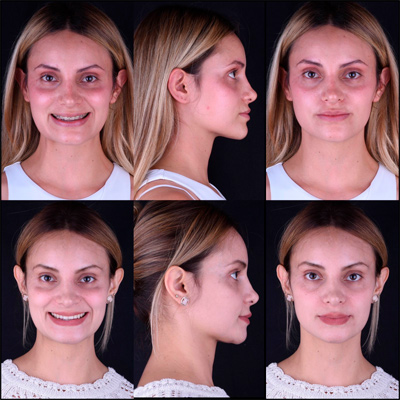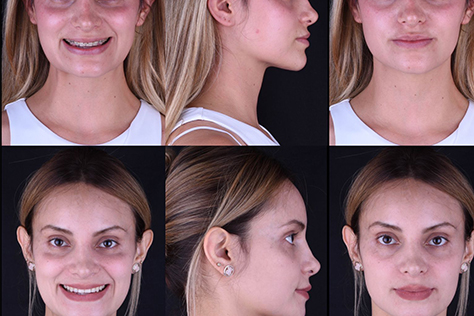What is Orthognathic Surgery?
Many times we receive in our office patients who visit us because they do not bite well or because they see that they have something strange in their face. This is usually related to patients who have some kind of discrepancy between the maxillae (the bone of the maxilla and the mandible). When these bones present some alteration, it invariably changes the position of the teeth and therefore the way the patient bites. Unfortunately, the vast majority of patients who present this problem are treated only with orthodontics, which compromises in the medium and long term to obtain good dental and facial results.
The correct way to approach these cases is in a multidisciplinary manner and it is from this perspective that more and more patients decide to undergo orthognathic surgery.
In this procedure we have the ability to reposition the maxillary bone, jaw and chin and place them in the ideal position required by the patient, which allows a harmonization not only of the teeth but also of the patient's face.
Although it is true that this surgery has an important aesthetic component, its main benefit is at a functional level, since we can avoid the need for a new surgery:
- Wear or fracture of teeth, which increases dental longevity.
- Improved digestion, by chewing food better.
- In bimaxillary cases (where the maxilla and mandible are operated on) it is possible to augment the airway (the upper part of the respiratory tract) and eliminate sleep apnea (a potentially serious sleep disorder in which breathing stops and restarts repeatedly during the night). y como consecuencia mejoramos, evitando, en algunos casos los ronquidos.
- We avoid wear and tear and other joint problems that affect the patient's quality of life (in the temporomandibular joint; joint that joins the skull and jaw allowing us to open and close the mouth).
How is the process of this surgery?
For the surgery it is necessary that the patient's teeth are correctly aligned, so we usually place orthodontics first. During treatment, the patient is operated on and about six months later the braces are removed. There are also some cases where it is possible to operate on the patient first and then place the orthodontics to finish adjusting the bite in the new position. Since each patient's situation is different, the orthodontist is the best person to indicate which of these options is ideal in each case.
Do I need any specific orthodontics for this procedure?
No, this procedure in the right hands can be performed with traditional metal braces, esthetic braces, self-ligating braces or aligners.

What happens if I decide not to have surgery and just get braces?
Many people ask us this question, either because they are afraid of the idea of having surgery, because of an economic issue or because a colleague offered to solve their case without the need for surgery.
As we described at the beginning, the problem in these patients is not in the teeth but in the bone that supports them. When an orthodontist decides to force the tissues to try to camouflage the skeletal problem, he does so at the expense of the teeth and the tissues that support them, which is why it is normal for these patients to present future complications in their treatment, loss of teeth, condylar wear, respiratory problems and even facial deterioration.
There are some mild and even moderate cases in which it is possible to avoid surgery and for this reason it is essential to seek an orthodontist with experience in this type of diagnosis, who will advise you correctly to determine the best alternative for your specific case.
In our clinic we strive to offer our patients the best treatment options that modern medicine has to offer, therefore, we perform these types of procedures on a fairly regular basis.
Do not hesitate to contact us, we are here to support you and solve your case!

